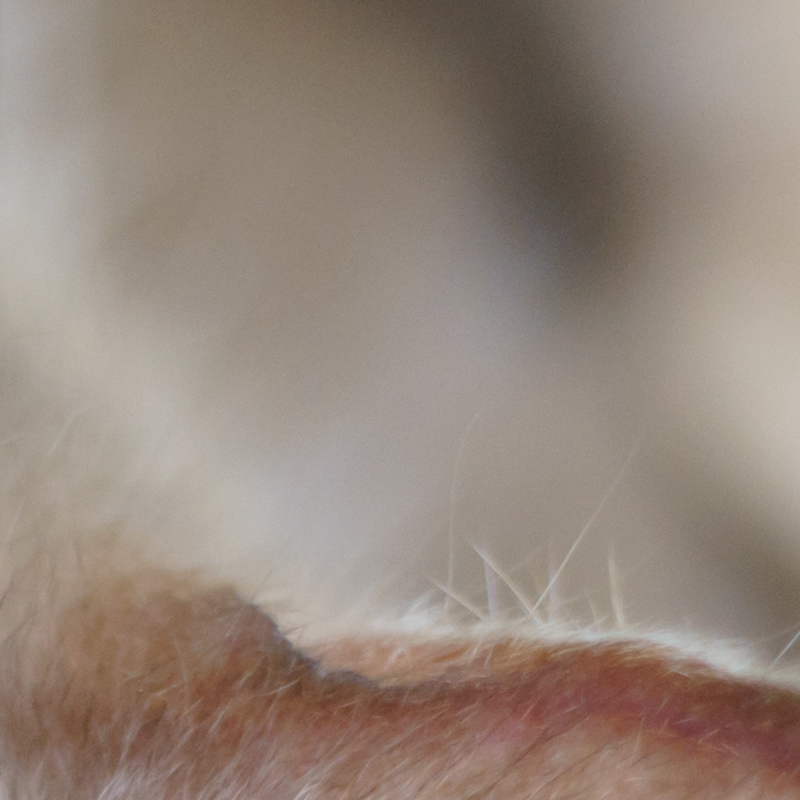Sony A7RII versus Nikon D850 – noise
There’s a lot of noise about the Nikon D850 right now but few direct comparisons. One problem I have with some early reports is that new D850 owners are most likely to be existing D810 or perhaps D750 or D5 owners. Any comparisons are therefore being made with earlier Nikon sensors.
Recently a Nikon ambassador whom I respect greatly placed some .NEF raw files into a Dropbox for fellow professionals to examine. Since this article effectively criticises Nikon, I will not reproduce anything recognisable. I naturally grabbed the files and processed them with my usual care in Adobe Camera Raw. This includes making adjustments to the Sharpness and Noise Reduction settings depending on the ISO used. My standard with Sony, Nikon and most other files is to reduce the radius for sharpening to the minimum (0.5) leaving the basic settings of 25 for sharpness and 25 for detail untouched, with no masking. I also don’t touch the Colour Noise controls at all, and usually only adjust the first Luminance control leaving Luminance Contrast and Luminance Detail at default. This first Luminance control tends to set to zero for ISO 100 (or the minimum for a given camera), 10 to 15 around 400 to 800, 25 at 1000 to 2000, 30 to 35 at 2500 to 4000, 50 at 6400 and never above this level.
In practice these settings make raw files from the Sony A7RII (and presumably A99II, which I do not own) fully useful to ISO 3200 regardless of conditions and intent. Blue skies do not have grain, shadows are smooth and clean, detail is fine, skin tones are not marred by noise. ISO 6400 is slightly grainy but only to the degree we used to expect from ISO 800 in cameras of the first CMOS period (2007-2008, the A700 and A900).
So, given the glowing reports on the new Nikon sensor, I was expecting to see something at least matching the A7RII. There’s not a huge difference between 45 megapixels (Nikon) and the earlier 42 megapixel Sony BSI CMOS. I have already seen that the Canon 51 megapixel sensor in the 5DS/R offers no benefit at all, just a steep fall-off in shadow detail and loss of dynamic range combined with more noise.
Here, then, is a 100% section from a raw .NEF at ISO 1000 on the D850, with the Adobe Camera Raw settings I would expect to turn in a clean result. It has been saved at JPEG 12 but WordPress’s image engine causes some quality loss:

The NR was set as described above, to Luminance 25.
Then I looked back through my files to locate some ISO 1000 raws from the A7RII and try to find something with broadly comparable tone (surprisingly difficult!). Here is the result, with exactly the same process and settings:

You will note that the grainy noise is much finer. Both are taken from regions away from the image centre where the camera’s firmware will be adding some gain to combat sensor-created vignetting. On-axis areas are slightly less noisy in both cameras. This may also depend on the lens. You probably think this looks noisy for the A7RII, and this light colour and exposure level does indeed tend to increase noise.
Here is another A7RII ISO 1000 clip in better light, brighter subject matter, closer to the frame centre – this is more typical of the noise level you should see (or not see) in Sony 42 megapixel images:

I’ver chosen blurred neutral areas beyond the point of critical focus because these emphasise noise. If the same settings are used with sharply focused detail, with strong colours or contrast and textures, you simply won’t see noise at all at ISO 1000 and NR 25.
I will also say that while the Nikon community seemed impressed by the sharpness of sample images, I was not. I have to reconsider my critical opinions of Sony’s lenses. I have been judging zooms against Carl Zeiss and Voigtländer primes, and used to seeing a level of detail in images at 100% which I guess regular DSLR users simply don’t expect. Part of this is down to the quality of the A7RII sensor, part down to the lenses, and a whole lot is down to the zero-error focusing of the mirrorless system. I am part of another community, where most photographers use Canon or Nikon and prefer to have fast zooms and primes (the usual 16-35mm f/2.8 or 14-24mm f/2.8, 24-70mm f/2.8, 70-200mm f/2.8, 35mm f/1.4, 50mm f/1.4 and 85mm f/1.4 kit). In this group, many are having their cameras and lenses custom matched and reporting improvements in sharpness which transform their autofocus work.
Those who use Sony, Fujifilm, Olympus or Panasonic mirrorless systems don’t tend to make any comment as they have been getting critically sharp focus ever since they made the switch from DSLRs.
Conclusion? My A7RII is now two years old. It’s a 2015 model which is certainly not surpassed by 2017 rivals at least in the ‘core competence’ of its sensor. Other Sony models may offer different levels of special features, like the blistering shooting speed and focus tracking of the A9, but the A7RII continues to do its job as a great all-rounder and this quick comparison shows why.
– David KIlpatrick
- Affiliate link – new and used A7RII at WEX Photographic (UK)
- Affiliate link – A7RII at B&H (USA)
- Affiliate link – Amazon UK http://amzn.to/2xM2smX
To support Photoclubalpha, buy through our Affiliate links… or subscribe to David’s premium-quality photographic bi-monthly Cameracraft which includes regular Sony-related editorial, with system expert Gary Friedman as Associate Editor – see www.iconpublications.com
